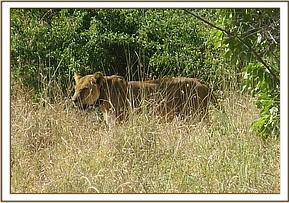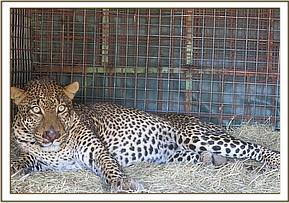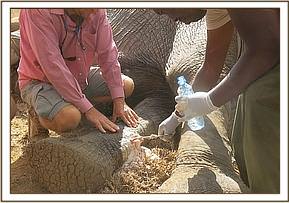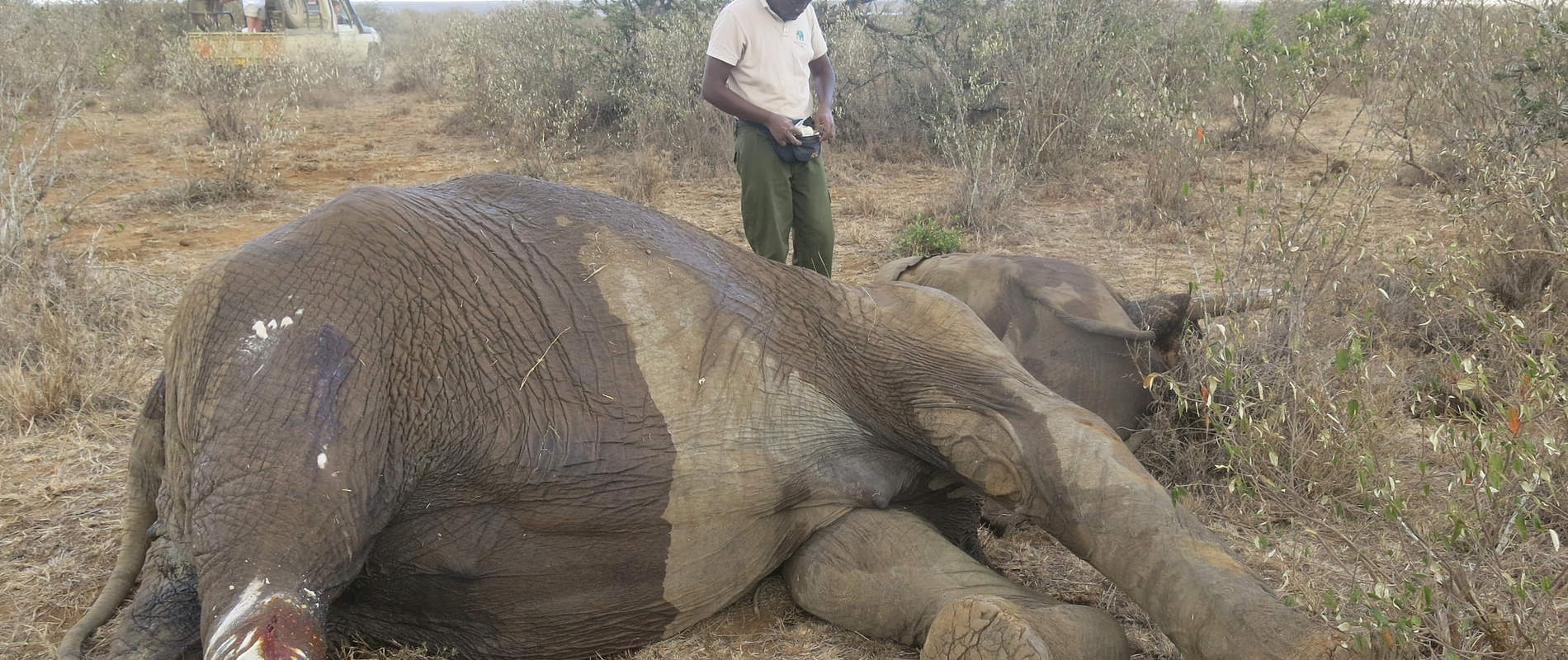EASTERN CONSERVATION AREA VETERINARY UNIT MONTHLY REPORT JANUARY 2017 Report by: Bernard Rono Summary This report describes the activities of the Meru veterinary unit in January 2017
EASTERN CONSERVATION AREA VETERINARY UNIT MONTHLY REPORT JANUARY 2017
Report by: Bernard Rono
Summary
This report describes the activities of the Meru veterinary unit in January 2017. The unit resumed duty on 19th January after a 4 week annual leave.
Northern Kenya received lower than average rainfall during the November/ December season, resulting in limited pasture and water resources throughout the region in January. Laikipia has recorded increasing incidences of human wildlife conflict due to incursion of pastoralists into areas which were predominantly occupied by wildlife. One such case was an injured elephant on Mugie ranch Laikipia which was treated for gunshot injuries.
The Meru veterinary unit is supported by the David Sheldrick Trust to provide veterinary care in northern Kenya.
CASE #1: SICK LIONESS IN MURURI AREA
Date: 20th January 2017
Species: Lion
Sex: Female
Age: Adult
Location: Meru national park
History
On 17/01/17 the lion monitoring team in Meru NP reported a severely emaciated lioness called Virginia. She had three cubs approximately six weeks old and was accompanied by another lioness. The pride had a water buck carcass.
Virginia had been darted to replace a faulty satellite collar in November 2016. At that time a physical examination revealed lacerations to the foot, a fractured rib and a broken canine tooth. It was suspected to be pregnant. For two months, data from the tracking collar showed that she had moved into a swampy area of the park that could not be accessed by vehicle for monitoring.
Examination
This lioness was evaluated on 20/01/17. It had joined a pride of seven female lions. Though she had lost considerable weight she was alert. The weight loss was attributed to lactation stress, therefore we recommended further monitoring.

Prognosis
Images taken seven days later showed that she had improved and seemed to be on the way to a full recovery.
Case #2: Relocation of a Leopard
Date: 27th January 2017
Species: Leopard
Sex: Male
Age: Adult
Location: Ol Donyo ranch, Timau
Capture
This leopard was identified as the cause of livestock losses in the ranch. It was captured using a cage trap and relocated to Meru Park.


A general veterinary assessment carried out before release showed that it was in good health.
CASE #3: ELEPHANT TREATMENT IN MUGIE RANCH
Date: 28th January 2017
Species: Elephant
Sex: Female
Age: Adult
Location: Mugie ranch
History
Rangers on patrol at Mugie ranch Laikipia requested for examination and treatment of an injured elephant. This elephant showed lameness and exuded pus on its right hind leg. Recent reports indicated increasing incidences of human wildlife conflict in parts of Laikipia due to drought and livestock incursion in private ranches and conservancies.
Immobilization, examination and treatment
This injured elephant was found in a herd of 15 adult females and calves of various age. Immobilization was achieved using Captivon® delivered in a 3cc Dan-Inject dart from a vehicle with the dart placed into the gluteal muscles. Down time was 4 minutes and it fell onto right lateral recumbence.


Examination showed a puncture wound distal and caudal to the hock joint. The wound seemed to have been inflicted by a gunshot exiting ventrally on the cranial aspect. It exuded copious amount of pus. Manipulation of the leg did not show injury to the bone, only the soft tissue was affected.


The wound was cleaned using dilute Hydrogen peroxide and application of Povidone Iodine. Parenteral antibiotic was injected and Flunixin meglumine given for pain management.


Prognosis
This elephant is expected to make a complete recovery after successful treatment of septic wounds.









